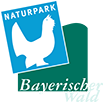Hungarian gentian and friends
Flora on the Großer Arber
Since the ice age of more than 10,000 years ago, numerous rare plant species, known as ice age relicts, have been preserved on the Arber summit. They were unable to spread under the climatic conditions of the post-glacial period and could only survive in the harsh climate on the Großer Arber.
One of the most striking and beautiful plants on the Arber summit is the Hungarian gentian (Gentiana pannonica), which grows up to 50 cm tall. Its blue-violet blooms, which appear for two to three weeks from mid/late July, are typical features of subalpine heathlands.
The thin-soiled heathland on the Arber was shaped by grazing cows. The mat grass – also called “brush grass” here in the Bavarian Forest – is not a favourite of cows and therefore left behind as a pasture indicator. Today, these acidic soil heathlands have become increasingly rare and are among the most endangered plant communities in Germany.
Other arctic-alpine flora on the Arber include the three-leaved rush (Juncus trifidus) and the rare alpine club moss (Diphasium alpinum).
Sub-alpine mountain pine scrub, the very rare mountain crowberry (Empetrum hermaphroditum) and a species-rich mosaic of dwarf shrub heath can be found at the summit. Heather, blueberries and cranberries are closely interweaved across the terrain.
Colourful diversity
On the summit, different habitats alternate within a very confined area and provide homes for a variety of plants.
What’s in bloom?
The Hungarian gentian is truly superb. Can you find it on the information board or perhaps even in nature? Please keep to the paths though, so that bees and bumblebees and other walkers too can enjoy them.
